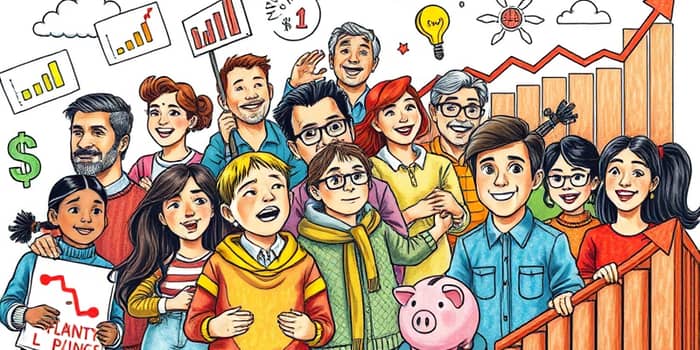
In an era marked by rapid market shifts and unexpected global crises, understanding and enhancing financial resilience has become an urgent priority for households and communities alike.
Financial resilience refers to the ability to withstand, adapt, and recover from economic shocks and stresses, ranging from job losses and income reductions to sudden health expenses and market downturns. It encompasses both objective readiness and perception: the tangible resources one holds (savings, assets, income diversity) alongside self-reported confidence in managing future uncertainties.
Scholars agree that resilience is multifaceted, blending everyday budgeting habits with long-term planning. At its core, it measures how well individuals or regions sustain living standards when faced with adversity.
Quantifying financial resilience requires robust tools. The widely used Financial Resilience Index (FRI) aggregates income, assets, expenses, and debt levels, comparing current readings to historical baselines. A score above zero signals improvement over time, while a score below zero highlights growing vulnerability.
Sub-indices, such as the Cost Resilience Index and the Resource Resilience Index, capture pressures from housing, energy, health care, and child care versus the strength of income sources, savings, and credit access.
Complementary surveys like the FINRA National Financial Capability Study and Harris Polls probe emergency savings (“Could you raise $2,000 in 30 days?”) and debt burdens. In 2018, nearly 4 in 10 U.S. households lacked the resources to meet a $2,000 unexpected expense, and fewer than 2 in 10 were deemed highly resilient.
Post–Great Recession analyses show that overall resilience improved nationally, yet significant disparities persist. The COVID-19 pandemic further exposed gaps: low-income households and younger adults faced heightened insecurity due to job disruptions and limited savings.
Recent studies reveal:
These figures underscore a persistent vulnerability at the heart of the middle and lower economic strata.
Beyond numbers, the psychological dimension of financial resilience plays a pivotal role. Financial worries—over paying bills, sustaining living standards, or covering healthcare—are closely linked to anxiety, depression, and long-term mental health challenges.
During downturns, stress amplifies, creating a feedback loop where worry leads to impaired decision-making, which in turn undermines resilience efforts. Recognizing this dynamic, researchers emphasize the need for coping strategies alongside fiscal planning.
Transforming insight into action begins with targeted steps. Individuals and families can strengthen their defenses through:
On a policy level, expanding access to affordable financial education, incentivizing savings through tax-advantaged accounts, and strengthening social safety nets can bolster resilience at scale.
At the macro level, resilience is shaped by economic diversity and equality. Communities with a mix of industries—manufacturing, services, technology—fare better in downturns. Regional measures, like the Resilience Capacity Index (RCI), track income distribution, sector variety, and local support systems.
Benchmarks against national averages help identify at-risk areas, guiding interventions such as community credit unions, workforce retraining programs, and localized emergency funds.
Assessing financial resilience during economic downturns reveals both stark challenges and clear pathways forward. By combining rigorous measurement tools, targeted strategies, and supportive policies, individuals, families, and communities can navigate uncertainty with greater confidence.
Embracing proactive planning and continuous learning empowers all of us to transform financial shocks into opportunities for growth. As global markets evolve, fostering resilience will remain essential to securing sustainable prosperity for generations to come.













